COVID-19 and UV Light
COVID-19 and UV Light
With the outbreak of COVID-19, disinfectant demand is reaching an all-time high. With shortages of hand sanitizers, PPE, and disinfectants is it time we begin looking at other options such as ultraviolet light?
It is important to understand what ultraviolet light is first. There are 3 major types of ultraviolet light: UV-A, UV-B, and UV-C. All three forms are naturally occurring from sunlight, but the atmosphere filters the most dangerous of these, UV-C, via the Ozone Layer. Both UV-A and UV-B are still dangerous to humans, especially in high intensity and lengthened exposures. UV-A has a long wavelength and is closely associated with skin tanning, skin burning, and skin aging. UV-B has a shorter wavelength and is associated with more acute and severe skin burning. Most of the non-melanoma skin cancers and a large portion of melanomas are associated with UV exposure. Both of these are very damaging to the human eye causing blindness, cataracts, and cancers of the eye. Much like other forms of radiation, UV light damages the genetic material that makes up cells causing them to react in unnatural ways causing cancers, aging, tans, and burns.
Since ultraviolet light can damage genetic material, one of its most beneficial uses is as a disinfectant or GUV (Germicidal Ultraviolet). As early as 1877[1],[2] UV radiant was used to disinfect surfaces, in 1910[3] it was used for disinfecting water, and in 1935[4] it was used to disinfect air. So why have you not heard of it today? Many times, it is used in very specific applications such as hidden in ventilation, sterilization of medical equipment, and in vacant hospital rooms by use of autonomous vehicles or robots. GUVs use is limited due to its dangerous nature. GUV is primarily used with UV-C, the most dangerous form of UV. Exposure to UV-C can cause permanent skin and eye damage in a fraction of the time compared to UV-A and UV-B. It is important to note that UV-A and UV-B are both somewhat effective at GUV, albeit in much longer exposure times making their use much less efficient.
There is some good news however, UV-C is already being used in China to disinfect public transportation. Buses are bathed in the classic blue hue of UV light to kill SARS-CoV-2 in special garages. The New York City Subway system is also planning to implement something similar during nighttime closures. Many hospitals and clinics are also implementing more efforts to disinfect rooms, surfaces and equipment. A team at Columbia’s Center for Radiological Research led by Dr. David Brenner, has been testing a relatively new form of UV-C. “Far-UVC” is theorized to be safe for human contact, but still deadly to pathogens. At 222 nanometers, the wavelength is unable to penetrate even the outermost layer of skin cells as well as the cells of the eye. This team is in the midst of a 60-week trial on laboratory mice. At 40 weeks, there has been no discernable negative effect on the mice they have been testing.
With UV light able to kill deadly pathogens, including the SARS-CoV-2 Novel Coronavirus, this may mean some drastic changes could be coming to lighting in stores, offices, schools, and restaurants. If you are looking for an opportunity, there are many UV lighting options currently on the market. Give us a call today: 763-684-1548.
[1] Downes A, Blunt TP. The influence of light upon the development of bacteria. Nature. 1877;16(402):218. [2] Downes A, Blunt TP. Researches on the effect of light upon bacteria and other organisms. Proc Royal Soc London. 1877;26:488-500 [3] Grant KC. Sterilization of polluted water by ultra-violet rays. Engineering News. 1910;64(275) [4] Wells WF, Wells MW, Wilder TS. Viability of B. coli exposed to ultra-violet radiation in air. Science. 1935;82:280-1


